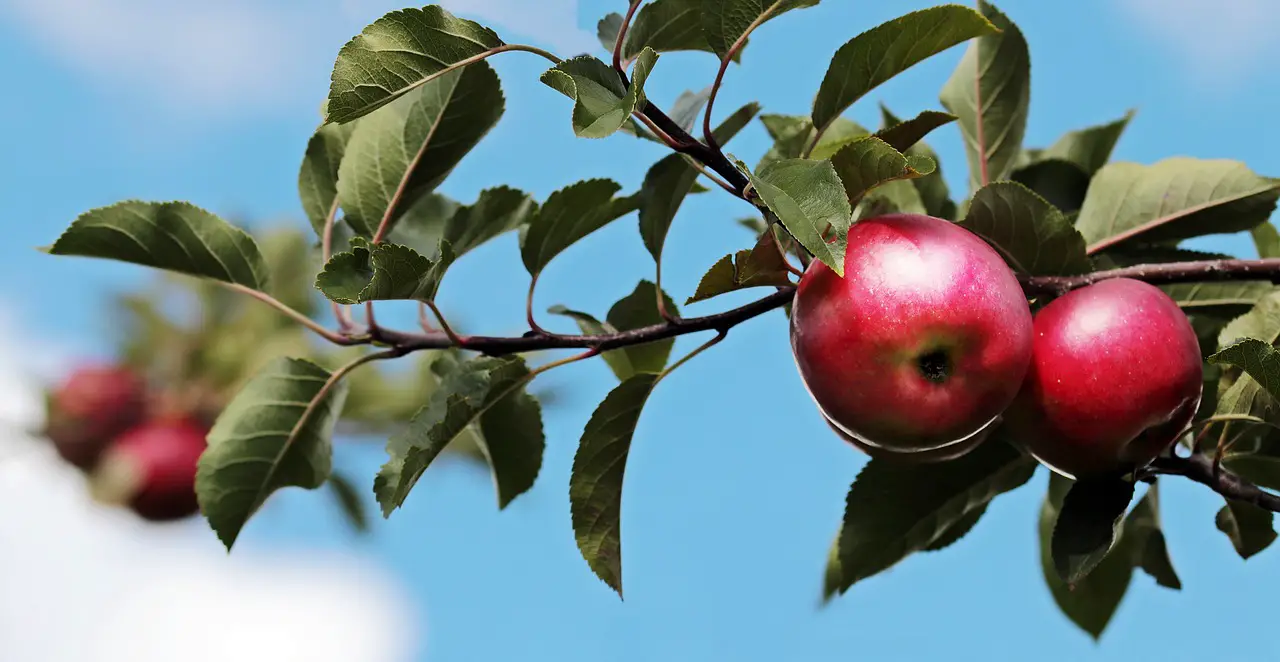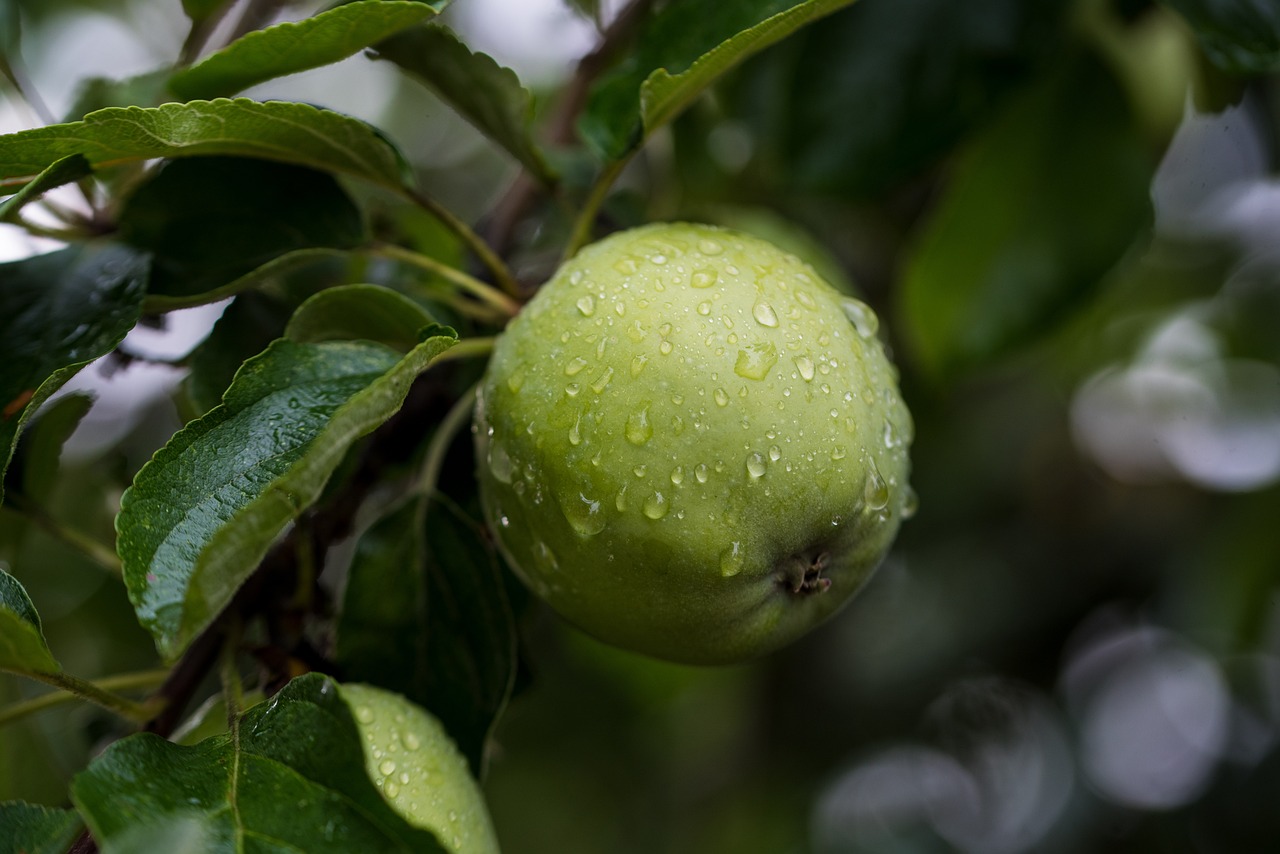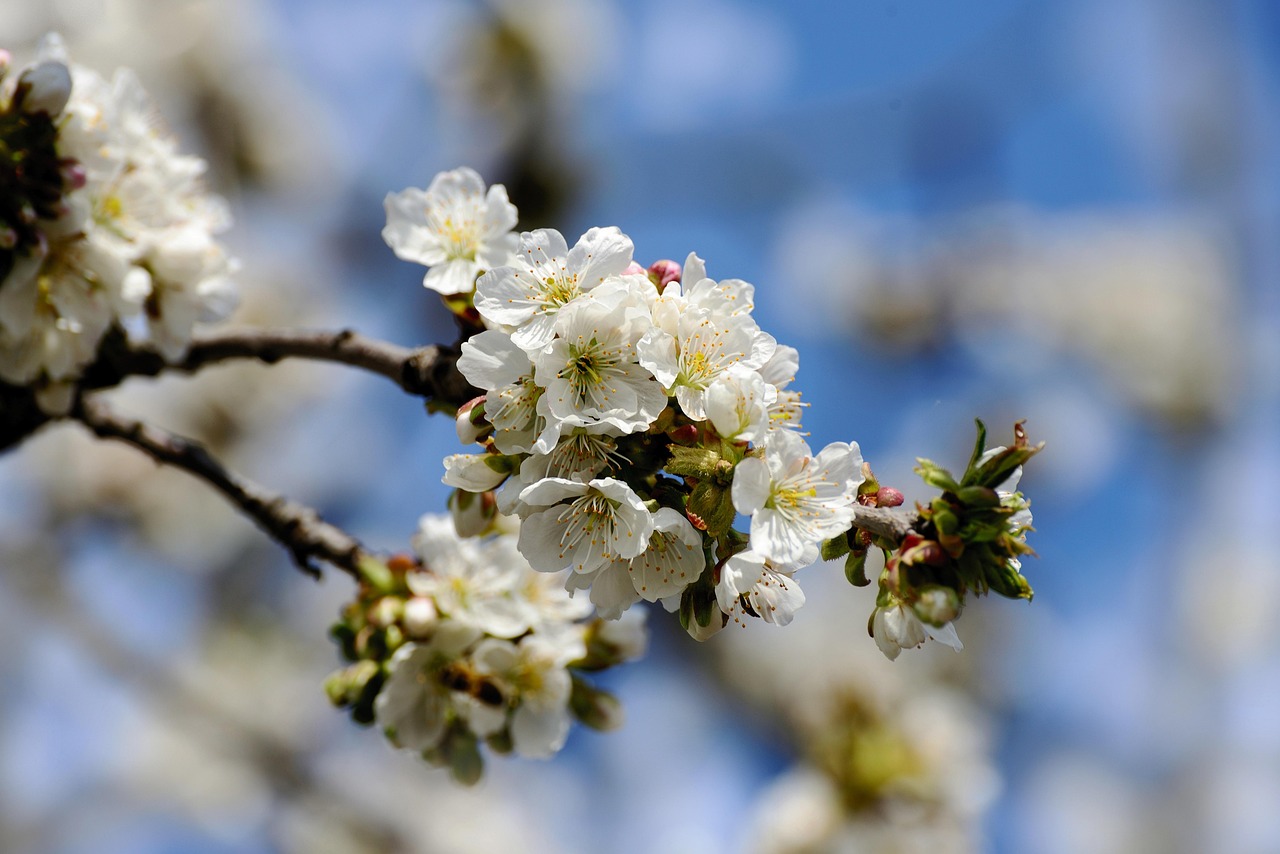The growth rate of apple trees varies depending on the variety, environmental conditions, and care provided. Generally, apple trees can grow between 12 to 24 inches per year, with dwarf varieties growing slower than standard trees. Proper pruning, watering, and soil management can enhance growth rates significantly.
Understanding Apple Tree Growth Rates
Apple trees are a popular choice for home orchards due to their delicious fruit and beautiful blossoms. For those interested in cultivating their own apple trees, understanding the growth rate is essential. Growth rates can influence when the trees will begin to bear fruit and how much maintenance they will require over time.

Several factors affect the growth rate of apple trees. These include the specific apple variety, local climate conditions, soil quality, and the care provided by the gardener. A well-maintained tree in ideal conditions can thrive, while a tree in poor conditions may struggle to grow.
Factors Influencing Growth Rates
To gauge the growth potential of apple trees in a home orchard, it is important to consider various factors:
- Variety: Different apple varieties have different growth habits. Standard varieties typically grow faster than dwarf varieties which are cultivated for smaller spaces.
- Climate: Apple trees thrive in temperate climates. Factors such as temperature, sunlight, and rainfall all significantly impact growth.
- Soil Quality: Nutrient-rich, well-draining soil promotes healthy growth. Regular soil testing can help determine nutrient needs.
- Watering Practices: Adequate watering is crucial, especially during dry spells. However, overwatering can lead to root rot.
- Pruning: Proper pruning encourages healthy growth and can help manage the shape of the tree.
Average Growth Rates by Variety
The growth rate of apple trees can also vary significantly by variety. Below is a comparison of common apple tree varieties and their average annual growth rates:

| Apple Tree Variety | Average Growth Rate (inches/year) | Notes |
|---|---|---|
| Standard Apple Trees | 18-24 | Tall and vigorous; ideal for larger spaces. |
| Dwarf Apple Trees | 12-18 | Perfect for small gardens; easier to harvest. |
| Semi-Dwarf Apple Trees | 15-20 | Good balance between size and yield; manageable height. |
When selecting an apple tree variety for your home orchard, it is essential to consider not only the growth rate but also the space you have available. Dwarf varieties may be more suitable for limited areas but can still produce a good yield if properly cared for.
The Importance of Site Selection
The location of your apple trees can make a significant difference in their growth rates. Choosing a site with adequate sunlight is crucial. Apple trees typically require at least six hours of direct sunlight daily. Additionally, wind protection can be beneficial to prevent damage to young branches and blossoms.
Soil type also plays a critical role in the success of apple tree growth. Well-draining sandy loam soils are generally preferred. Heavy clay soils can impede root growth and lead to waterlogged conditions. Regular soil amendments, such as compost or well-rotted manure, can improve soil structure and fertility over time.

Watering and Fertilization Practices
Proper watering practices are essential for healthy apple tree growth. Newly planted trees require regular watering to establish their root systems. Mature trees benefit from deep watering during dry periods, which encourages deeper root growth. It is crucial to avoid overwatering, as this can lead to root diseases.
Fertilization is another important aspect of promoting healthy apple tree growth. A balanced fertilizer can provide necessary nutrients during the growing season. Soil testing can help determine the specific nutrient needs of your apple trees, ensuring they receive optimal care for robust growth.
Pest and Disease Management for Healthy Growth
Maintaining healthy apple trees involves more than just proper watering and fertilization. Pest and disease management is crucial for ensuring robust growth and maximizing fruit yield. Various insects and diseases can affect apple trees, impacting their overall health and growth rates.
Common Pests Affecting Apple Trees
Apple trees can be susceptible to several pests. Identifying these pests early can help mitigate damage:

- Apple Maggot: This fly lays eggs in the fruit, leading to unsightly spots and premature drop.
- Codling Moth: The larvae tunnel into the fruit, causing internal damage and making apples unmarketable.
- Aphids: These small insects feed on tree sap, leading to stunted growth and leaf curl.
- Spider Mites: They thrive in hot, dry conditions, sucking sap from leaves and causing discoloration.
Disease Prevention Strategies
In addition to pests, apple trees face various diseases that can hinder growth:
- Powdery Mildew: This fungal disease causes a white powdery coating on leaves and can stunt growth.
- Fire Blight: A bacterial infection that can kill branches and even entire trees if not controlled.
- Scab: Fungal disease that affects leaves and fruit, leading to poor quality yields.
Implementing effective disease prevention strategies is essential. Here are some methods to consider:
- Regular Inspection: Check trees regularly for signs of pests or diseases. Early detection is key.
- Maintain Tree Hygiene: Remove fallen leaves and fruit to reduce the risk of disease spread.
- Proper Pruning: Prune trees to improve air circulation, which helps prevent fungal diseases.
- Organic Treatments: Consider using organic pesticide options for managing pests without harming beneficial insects.
The Role of Pollination in Growth and Yield
Pollination is another critical factor influencing the growth rate and fruit yield of apple trees. Most apple varieties require cross-pollination to set fruit effectively. This means having at least two different varieties in close proximity to each other.
Importance of Pollinators
Pollinators, such as bees, play a vital role in the pollination process. Without them, the apple trees may produce fewer fruits or none at all. Here are ways to encourage pollinators in your orchard:
- Plant Diversity: Include a variety of flowering plants to attract different pollinator species.
- Avoid Pesticides: Limit pesticide use during blooming periods to protect pollinators.
- Create Habitat: Provide nesting sites for bees, such as leaving some areas undisturbed.
Selecting Compatible Varieties
Choosing compatible apple tree varieties is essential for successful cross-pollination. Some popular pairings include:
| Variety 1 | Compatible Variety 2 |
|---|---|
| Honeycrisp | Fuji |
| Gala | Granny Smith |
| Braeburn | Cortland |
When planning your orchard layout, keep in mind the distances between different varieties. Ideally, they should be planted within 100 feet of each other to ensure effective pollination.
The Impact of Environmental Conditions on Growth
Environmental factors significantly influence the growth rate of apple trees. Understanding these conditions can help orchard enthusiasts create optimal growing environments.
Temperature Considerations
Apple trees require a certain number of chill hours during winter to break dormancy and promote healthy spring growth. Chill hours refer to the cumulative hours below 45°F (7°C) during winter months. Different apple varieties have varying chill hour requirements:
- Low Chill Varieties: Require fewer than 500 chill hours (e.g., ‘Anna’ and ‘Dorset Golden’).
- Moderate Chill Varieties: Require 500-1,000 chill hours (e.g., ‘Fuji’ and ‘Gala’).
- High Chill Varieties: Require over 1,000 chill hours (e.g., ‘Granny Smith’ and ‘Honeycrisp’).
Understanding these requirements helps in selecting the right varieties based on local climate conditions.
Soil Moisture Levels
The moisture level in the soil is equally important for healthy apple tree growth. Soil that is too dry can stress trees, while overly wet conditions can lead to root rot. Monitoring soil moisture levels using tools like moisture meters can help maintain optimal conditions for growth.
This knowledge empowers home orchard enthusiasts to cultivate thriving apple trees, ensuring healthy growth and an abundant harvest year after year.
Understanding Varieties of Apple Trees
The growth rate and overall success of apple trees in a home orchard greatly depend on the variety selected. Each apple variety has its unique characteristics, including growth habits, fruit flavor, and resistance to pests and diseases. Understanding these varieties is crucial for orchard enthusiasts aiming to maximize their success.
Popular Apple Varieties
Here are some of the most popular apple varieties that home orchardists might consider:
- Red Delicious: Known for its deep red color, this variety is sweet and juicy. It grows vigorously, making it suitable for various climates.
- Granny Smith: This tart green apple is excellent for baking and cooking. It has a moderate growth rate and requires a significant number of chill hours.
- Fuji: A cross between Red Delicious and Ralls Janet, Fuji apples are crisp and sweet. They thrive in cooler climates.
- Honeycrisp: This variety is beloved for its sweet and juicy flavor with a unique crunch. It has a moderate growth rate and requires good care.
- Gala: Gala apples are aromatic and sweet, with a fine texture. They grow well in a variety of conditions.
Growth Characteristics of Different Varieties
The growth characteristics of apple tree varieties can influence their performance in your orchard. Here are some key factors to consider:
| Variety | Growth Habit | Average Yield (bushels/tree) | Chill Hour Requirement |
|---|---|---|---|
| Red Delicious | Vigorous, upright | 8-12 | 800-1,000 |
| Granny Smith | Moderate | 6-10 | 1,000+ |
| Fuji | Strong, spreading | 5-8 | 600-800 |
| Honeycrisp | Moderate spreading | 6-10 | 800-1,000 |
| Gala | Upright with a narrow crown | 8-12 | 400-600 |
Selecting the right variety based on its growth characteristics can help orchardists make informed decisions about spacing, pruning, and care practices.
Cultivation Techniques for Optimal Growth
To achieve the best growth rates and yields from apple trees, specific cultivation techniques must be employed. These techniques encompass various aspects of tree care from planting to maintenance.
Planting Techniques
The initial planting process sets the foundation for healthy apple tree growth. Consider the following guidelines:
- Selecting the Right Location: Choose a site with full sun exposure and good air circulation.
- Preparing the Soil: Amend soil with organic matter to improve drainage and fertility before planting.
- Dirt Mounding: Create a mound of soil to plant the tree slightly above ground level, which encourages better root growth.
- Sufficient Spacing: Space trees properly to avoid overcrowding, which can limit airflow and increase disease risk.
Pruning for Health and Productivity
Regular pruning is essential for maintaining healthy apple trees. Effective pruning promotes better air circulation, sunlight penetration, and overall tree structure. Here are some tips for pruning:
- Timing: Prune during late winter or early spring when trees are still dormant.
- Cuts: Make clean cuts at a 45-degree angle to prevent moisture accumulation and disease entry.
- Aim for an Open Center: Maintain an open center structure to enhance light penetration.
- Remove Dead or Diseased Wood: Regularly inspect trees and remove any dead or diseased branches promptly.
Irrigation Practices for Healthy Growth
Irrigation is a vital aspect of maintaining healthy apple trees. Adequate water supply influences growth rates significantly. Implementing effective irrigation practices can ensure trees receive the necessary moisture without overwatering.
Irrigation Strategies
Here are some strategies for effective irrigation in an apple orchard:
- Drip Irrigation: This method delivers water directly to the roots, minimizing water waste and reducing disease risk.
- Soaker Hoses: Lay soaker hoses around the base of trees to provide slow absorption of moisture into the soil.
- Irrigation Scheduling: Monitor soil moisture levels regularly and adjust irrigation schedules based on current weather conditions.
- Avoiding Runoff: Ensure proper drainage to prevent runoff and promote deep root development.
By applying these cultivation techniques, home orchard enthusiasts can foster healthy apple tree growth, leading to fruitful harvests in the years to come.
Harvesting and Post-Harvest Care
Once your apple trees reach maturity, the next crucial step is harvesting. Understanding when and how to harvest apples can significantly affect their taste, quality, and storage life. Proper post-harvest care is equally important to ensure the apples remain in excellent condition until they are consumed or sold.
When to Harvest Apples
Harvesting apples at the right time is essential for achieving optimal flavor and texture. Here are some signs that apples are ready for harvest:
- Color Change: The skin color of the apple changes from green to its mature hue, which varies by variety.
- Ease of Picking: Ripe apples should come off the tree easily with a gentle twist.
- Seed Color: The seeds inside the apple should be dark brown; immature seeds are light in color.
- Taste Test: Sampling an apple can provide an immediate indication of ripeness; it should be sweet and flavorful.
Harvesting Techniques
Using proper techniques when harvesting can help prevent damage to both the fruit and the tree:
- Use Proper Tools: Utilize picking poles or baskets to reach higher branches without damaging the tree.
- Avoid Bruising: Handle apples gently to prevent bruising. Place them in soft containers for transport.
- Harvest in Dry Conditions: Pick apples when they are dry to reduce the risk of fungal infections.
Post-Harvest Handling
Once harvested, apples require careful handling to maintain quality:
- Cooling: Immediately cool apples after harvest to prolong freshness. Store them in a cool, dark place or in a refrigerator.
- Sorting: Sort apples by size and quality. Remove any damaged fruits to prevent spoilage.
- Storage: Use perforated bags or crates for storage, allowing for air circulation while preventing moisture buildup.
Common Challenges and Solutions
Even with the best practices, home orchardists may face challenges in apple tree cultivation. Here are some common issues and potential solutions:
Pest Management Issues
Pests can quickly become a problem for apple trees. Here are some integrated pest management strategies:
- Natural Predators: Encourage beneficial insects like ladybugs and lacewings that prey on harmful pests.
- Cultural Practices: Rotate crops and plant pest-resistant varieties to reduce pest populations.
- Pest Traps: Use pheromone traps to monitor and manage pest populations effectively.
Disease Management Strategies
Fungal diseases can also threaten apple trees. Consider the following preventive measures:
- Fungicide Application: Apply fungicides as needed, especially during wet conditions that favor disease development.
- Proper Spacing: Ensure adequate spacing between trees to promote airflow and reduce humidity.
- Resistant Varieties: Choose disease-resistant varieties when planting new trees to minimize long-term risks.
Final Thoughts
Cultivating apple trees in a home orchard is both a rewarding and challenging endeavor. Understanding growth rates, appropriate care practices, and addressing potential challenges are essential for achieving success. By selecting suitable varieties, employing effective cultivation techniques, and managing pests and diseases proactively, orchard enthusiasts can enjoy abundant harvests year after year.
The journey of growing apple trees offers not only delicious fruit but also the satisfaction of nurturing life and contributing to sustainable gardening practices. Whether you are a novice or an experienced gardener, the knowledge shared in this article can help you create a thriving apple orchard that provides beauty and bounty for many seasons to come.
